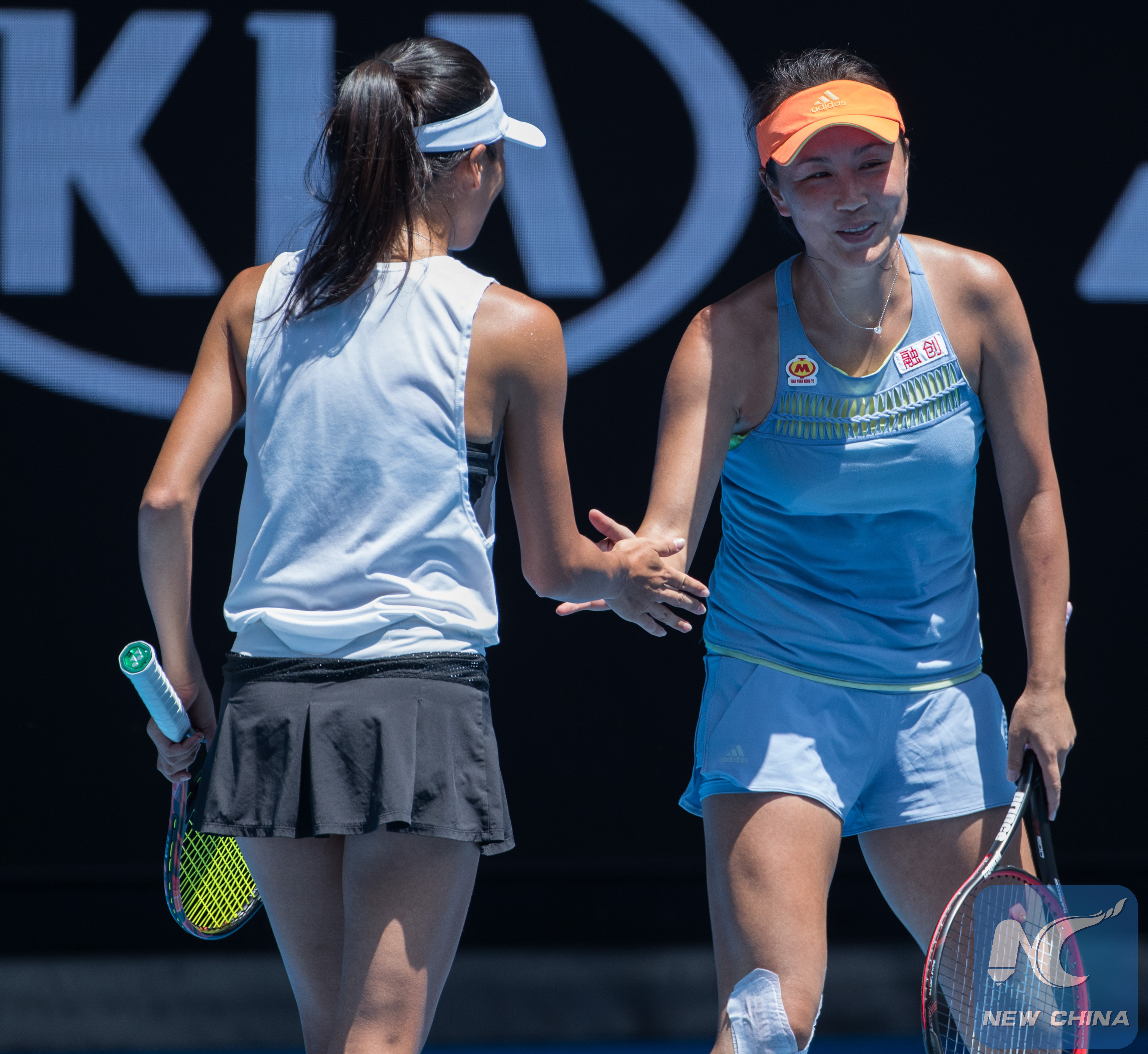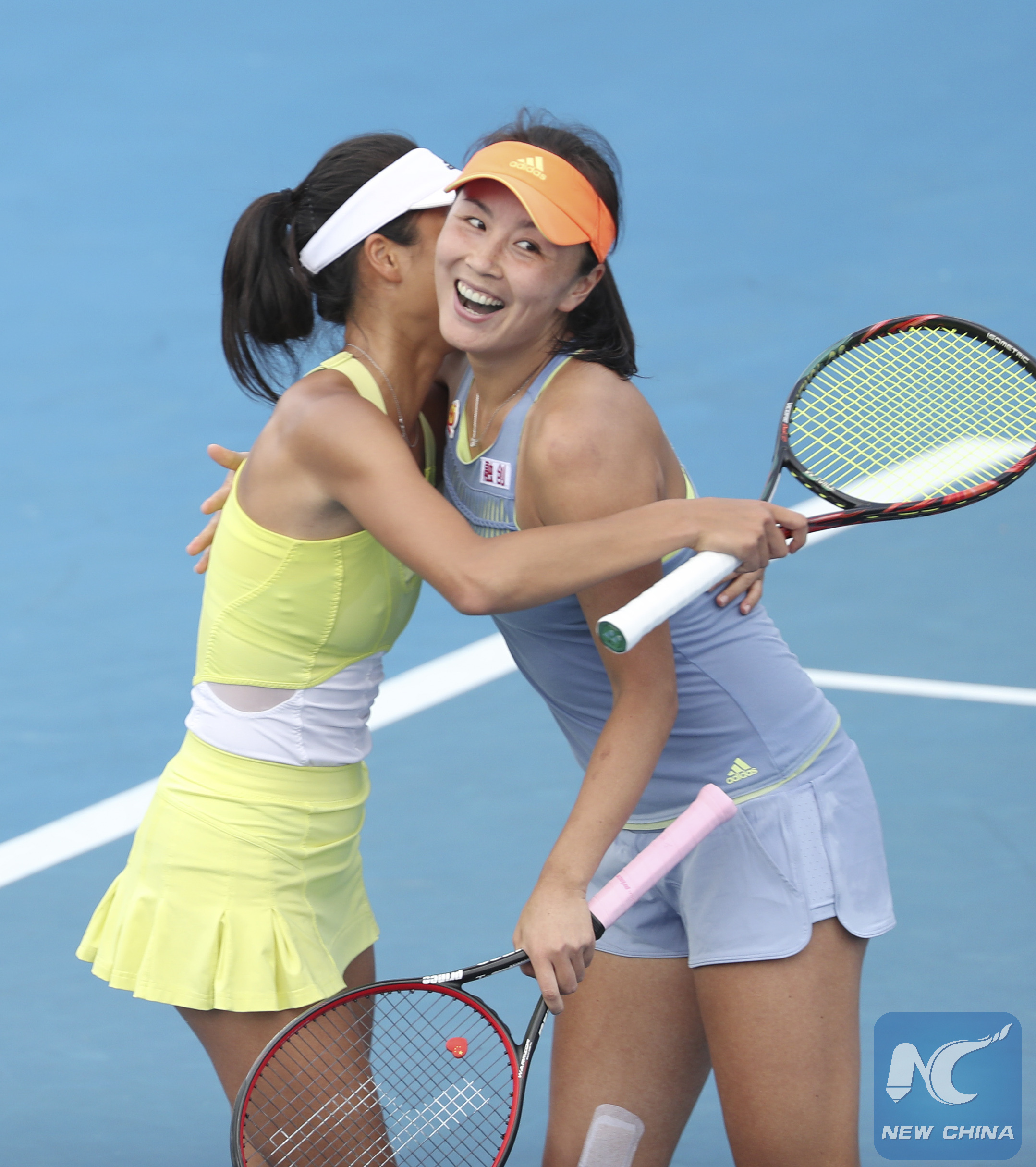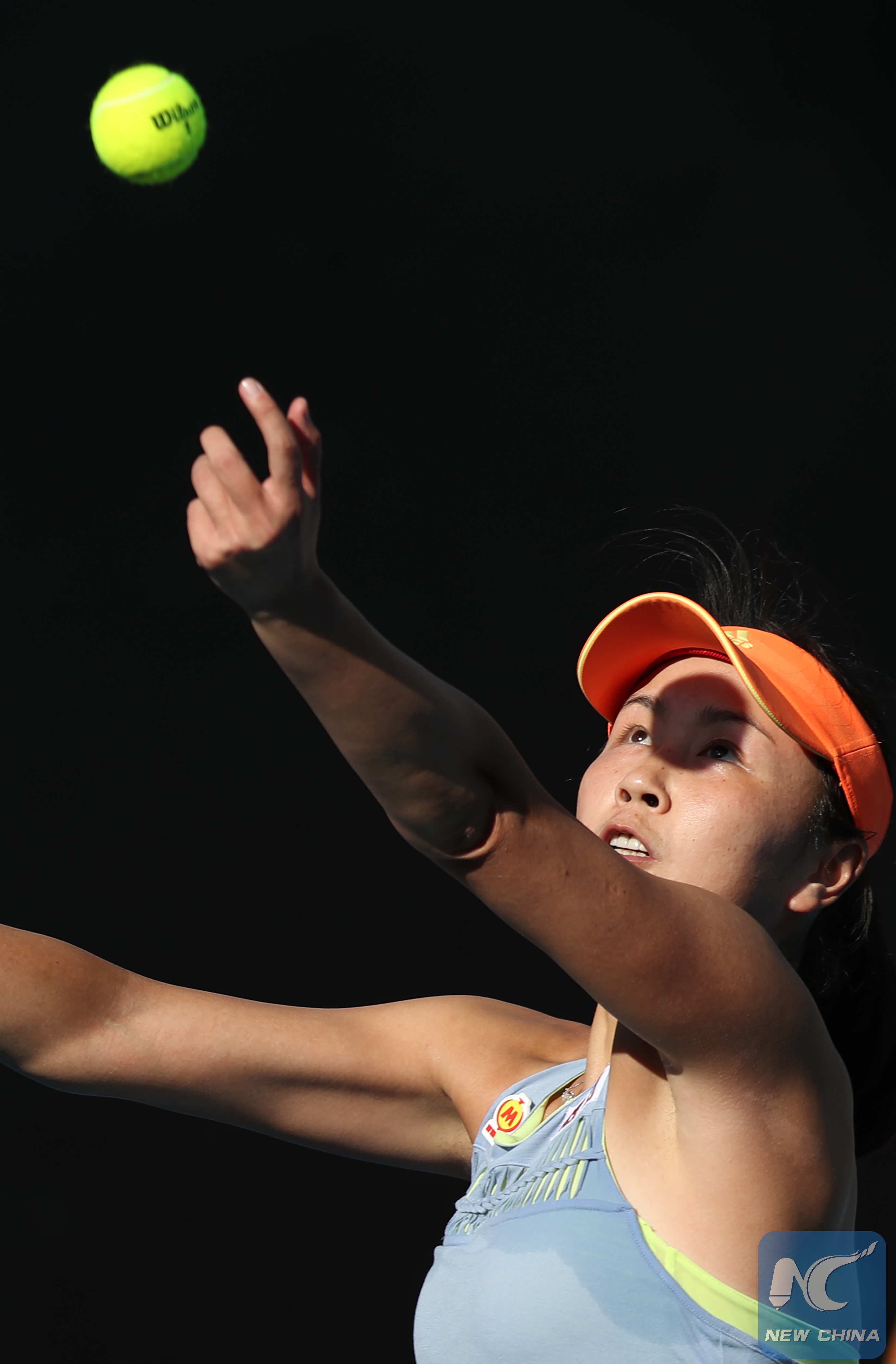
By Jing Xu
BEIJING, Jan. 31 (Xinhua) -- China's female tennis players had a lackluster performance at the recently-concluded Australian Open. Peng Shuai showed promise in the doubles competition with her partner Hsieh Su-Wei, but the pair were eliminated in the semifinals by Timea Babos and Kristina Mladenovic.
Peng's performance in the singles, however, was another story: she crashed out in the round of 128 to 15-year-old Ukrainian qualifier Marta Kostuk. This showing was a far cry from that of the 2014 Australian Open champion, and the most famous Chinese tennis player of all time, Li Na.

Peng Shuai and Hsieh Su-Wei (Xinhua photo/Bai Xuefei)
Even more noticeable than the performance gap between Peng and Li is the enthusiasm gap between the two seasoned players.
Although Peng, 32, is still one of strongest doubles players on the women's circuit and continues to show promise alongside her partner, she has not inspired anywhere near the level of enthusiasm from fans as did Li Na. Neither has she garnered the same level of international respect and attention, despite having a warm and vivacious personality.
So what is the reason for this lack of tennis starpower in China?
The answer to this question is complex, because there are factors working both for and against the proliferation of tennis talent in the country.
One of the main stumbling blocks to fostering a tennis culture in China is a serious lack of training and talent-scouting resources.
For another tennis star to emerge, his or her talents would need to be identified at a young age. Tennis is a sport that takes a very specialized kind of conditioning and endurance training that must be honed continually by promising players, starting no later than in their early teens.
Because of the unique nature of the sport, the best tennis stars absolutely must start training early. There is simply no way around this fact: In order to train early, talents must be identified early.
Despite these very real challenges, there is also some wind at the back of China's tennis efforts that should be acknowledged.
First and foremost, it must be said that, while tennis is one of the most difficult competitive sports to master, it is also quite accessible in terms of the ease of learning the basics.
It is an ideal sport for physical education because it combines endurance with strategy, and it is easy for instructors to pair pupils of similar ability with one another. Prodigies will make themselves known very quickly if they are given the environment for their skills to flourish.
Furthermore, it is clear that the government and sports officials understand the huge amount of unlocked potential out there in terms of tennis talent. Tournaments like the Shanghai Masters, along with the China, Wuhan, Shenzhen and Tianjin Opens are all held here each year with considerable government support and garnering significant enthusiasm from the public.
There appear to be growing efforts to scout young talents as well, but this is an ongoing project and much work remains to be done in this regard.

Peng Shuai (Xinhua photo/Bai Xuefei)
China should be looking for promising male and female talent throughout the country, but authorities should temper their expectations in terms of male talent in the next few years.
The reason for this lies in the differences between the current state of the men's and women's circuits that make the women's side a far more hospitable place to would-be newcomers.
The women's circuit is generally far more volatile and unpredictable than the men's tour at the moment. Young, promising upstarts routinely upset established names in the WTA with a frequency that we just don't see on the ATP side. This means that there are many more chances for newcomers to make a mark in the WTA than in the ATP.
This is not to say that it would be impossible for a Chinese male to make a splash on the ATP tour, but he would certainly have a great deal more work cut out for him given the number of strong, dominant names that would stand in his way. On the men's side, China is almost certainly looking at a decade-long slog to tennis glory.
But on the women's side, there is more promise in the short term. So will we see another Li Na emerge in the next few years?
The answer to that question can and should absolutely be "yes." In fact, there are probably some future Li Na's already out there.
But the question that remains to be answered is this: will we be able to find her and get a racket in her hand in time? (Jing Xu is an intern reporter for Xinhua)

